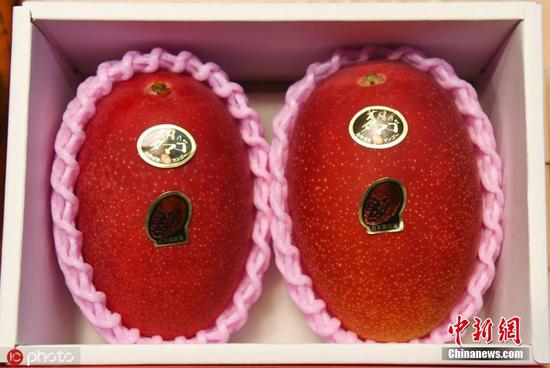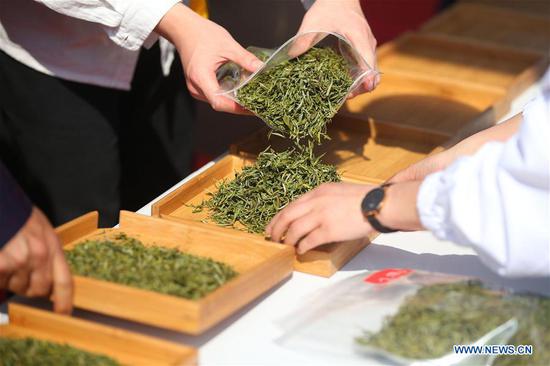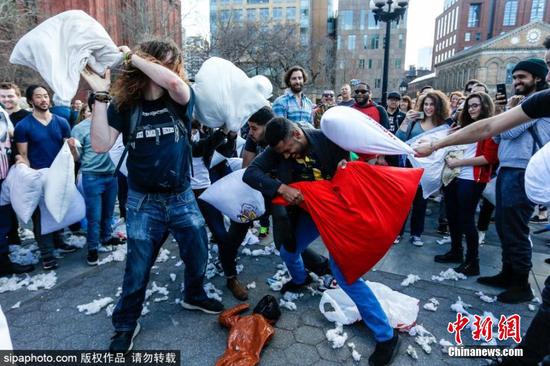圣诞树上为什么要挂像腌黄瓜一样的小饰品?
圣诞节就要到了,仔细观察装饰好的圣诞树,你有没有发现隐藏在树枝深处的一颗“腌黄瓜”?为什么人们要在圣诞树上挂腌黄瓜状饰品呢?这个传统的来历其实有好几种说法。
Every year, families across the U.S. and the UK hang up quirky little pickle-shaped ornaments when it comes time to trim their Christmas trees.
每年圣诞节,美国和英国的家庭都会在圣诞树上挂上新奇有趣的腌黄瓜状小饰品。
The practice is favored by many English-speaking families, and is thought to be a centuries-old tradition brought over from Germany.
很多英语国家的家庭都喜欢在圣诞树上挂腌黄瓜状装饰。据说这个传统来自德国,已经有几百年历史。
The tradition involves hiding the pickle ornament among the branches, and rewarding the child who finds it with the chance to open gifts first — or, alternatively, that person simply gets good luck for the year.
人们把腌黄瓜形状的装饰品藏在圣诞树的树枝里,哪个孩子首先在圣诞节找出它,就可以最先拆开礼物,或者预示着来年运气爆棚。
The origin of the tradition, however, is a bit murky.
但这个传统的起源却不太清楚。
In fact, it doesn't seem to have actually originated in Germany at all, since most Germans don't practice it.
其实这个传统并非来自德国,因为大多数德国人并不会在圣诞树上挂腌黄瓜状饰品。
A 2016 New York Times article pointed to a YouGov poll, in which 2,057 Germans were asked about the Christmas pickle.
2016年《纽约时报》曾报道称,舆观调查网就圣诞树挂腌黄瓜状饰品的传统,向2057位德国人展开了调查。
The survey found that 91 percent had never even heard of it.
调查发现,91%的受访者从没听说过这个传统。
Another theory is that the tradition of hanging a pickle didn't actually start in Germany, but with a German immigrant in the U.S..
另一种说法是,这一传统并非源自德国,而是来自美国的一位德国移民。
According to a 2011 edition of Tampa Bay magazine, one legend goes that a German man named John Lower, who was born in Bavaria in 1842, moved to the U.S. and became ill when he was in prison during the Civil War.
根据2011年《坦帕湾》杂志的一篇报道,有一种说法是,1842年出生在德国巴伐利亚约翰-洛厄来到美国后生病了,当时正处于美国内战时期,他被囚禁在监狱里。
He convinced a guard to give him a pickle as a last meal, but he ended up surviving. After being released, he honored that pickle by starting his own family tradition of hiding a pickle in his Christmas tree for the kids — saying whoever found it would have the same good fortune he did.
他说服一名看守给了他一颗腌黄瓜作为最后的一餐,但他最终活了下来。在被释放后,为了纪念这颗腌黄瓜,他开始在家中过圣诞节时在圣诞树里藏一颗腌黄瓜给孩子们寻找,还说谁找到就会有和他一样的好运。
Of course, that story is also unconfirmed, and could just be a tale that popped up to explain the pickles later on.
当然,这个说法也未经证实,仅能作为解释圣诞树挂腌黄瓜状饰品这种传统的一个传说故事。
According to Wide Open Country, the whole pickle game was most likely a marketing ploy to sell German glass ornaments to Americans.
根据《开阔的国家》报道,这一传统很可能是把德国的玻璃饰品卖到美国的一种销售策略。
It was said to be concocted by F.W. Woolworth when the store began importing the ornaments in 1880. Each one would come with a card that told the story of the tradition.
据称,这一传统是伍尔沃斯公司创造出来的。在1880年,这家商店开始进口饰品。每件饰品都附带有一张卡片,讲述这个圣诞传统的故事。
Whether the tradition is real or manufactured, pickle ornaments have become quite ubiquitous.
不管这个传统来自真实事件,还是被杜撰的,在圣诞树挂腌黄瓜状饰品已经非常流行。
While whimsical foodie ornaments shaped like avocado toast, hot sauce, pancakes, and ramen have become popular in recent years, pickle ornaments aren't just a fad.
尽管近年来开始流行在圣诞树上挂新奇的食物状饰品,比如形似牛油果吐司、辣酱、薄烤饼和拉面的装饰品,但在圣诞树挂腌黄瓜状饰品一直流传至今。
英文来源:每日邮报


















































